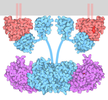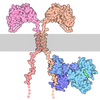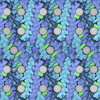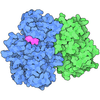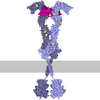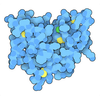| 登録情報 | データベース: PDB / ID: 9cmk
|
|---|
| タイトル | Crystal structure of p110alpha-RAS binding domain (RBD) in complex with molecular glue D927 |
|---|
 要素 要素 | Phosphatidylinositol 4,5-bisphosphate 3-kinase catalytic subunit alpha isoform |
|---|
 キーワード キーワード | SIGNALING PROTEIN / RAS / PI3Kalpha / p110alpha / PIK3CA / RBD / glue / D927 |
|---|
| 機能・相同性 |  機能・相同性情報 機能・相同性情報
response to muscle inactivity / regulation of actin filament organization / negative regulation of actin filament depolymerization / response to L-leucine / response to butyrate / IRS-mediated signalling / phosphatidylinositol 3-kinase complex / PI3K events in ERBB4 signaling / cellular response to hydrostatic pressure / autosome genomic imprinting ...response to muscle inactivity / regulation of actin filament organization / negative regulation of actin filament depolymerization / response to L-leucine / response to butyrate / IRS-mediated signalling / phosphatidylinositol 3-kinase complex / PI3K events in ERBB4 signaling / cellular response to hydrostatic pressure / autosome genomic imprinting / regulation of cellular respiration / Activated NTRK2 signals through PI3K / negative regulation of fibroblast apoptotic process / Activated NTRK3 signals through PI3K / phosphatidylinositol 3-kinase complex, class IB / positive regulation of protein localization to membrane / vasculature development / 1-phosphatidylinositol-4-phosphate 3-kinase activity / Signaling by cytosolic FGFR1 fusion mutants / Co-stimulation by ICOS / cardiac muscle cell contraction / phosphatidylinositol 3-kinase complex, class IA / Nephrin family interactions / Signaling by LTK in cancer / anoikis / phosphatidylinositol-3-phosphate biosynthetic process / relaxation of cardiac muscle / Signaling by LTK / MET activates PI3K/AKT signaling / PI3K/AKT activation / 1-phosphatidylinositol-4,5-bisphosphate 3-kinase activity / phosphatidylinositol-4,5-bisphosphate 3-kinase / vascular endothelial growth factor signaling pathway / phosphatidylinositol 3-kinase / 1-phosphatidylinositol-3-kinase activity / Signaling by ALK / PI-3K cascade:FGFR3 / Erythropoietin activates Phosphoinositide-3-kinase (PI3K) / negative regulation of macroautophagy / PI-3K cascade:FGFR2 / response to dexamethasone / PI-3K cascade:FGFR4 / phosphatidylinositol-mediated signaling / PI-3K cascade:FGFR1 / phosphatidylinositol phosphate biosynthetic process / Synthesis of PIPs at the plasma membrane / RET signaling / negative regulation of anoikis / PI3K events in ERBB2 signaling / Interleukin-3, Interleukin-5 and GM-CSF signaling / PI3K Cascade / insulin receptor substrate binding / intercalated disc / regulation of multicellular organism growth / protein kinase activator activity / CD28 dependent PI3K/Akt signaling / Role of LAT2/NTAL/LAB on calcium mobilization / RAC2 GTPase cycle / Interleukin receptor SHC signaling / positive regulation of TOR signaling / Role of phospholipids in phagocytosis / GAB1 signalosome / adipose tissue development / phagocytosis / endothelial cell migration / Signaling by PDGFRA transmembrane, juxtamembrane and kinase domain mutants / Signaling by PDGFRA extracellular domain mutants / Signaling by FGFR4 in disease / energy homeostasis / GPVI-mediated activation cascade / positive regulation of lamellipodium assembly / cardiac muscle contraction / Signaling by FLT3 ITD and TKD mutants / Signaling by FGFR3 in disease / Tie2 Signaling / response to muscle stretch / Signaling by FGFR2 in disease / RAC1 GTPase cycle / Signaling by FLT3 fusion proteins / FLT3 Signaling / Signaling by FGFR1 in disease / positive regulation of smooth muscle cell proliferation / Downstream signal transduction / insulin-like growth factor receptor signaling pathway / Signaling by phosphorylated juxtamembrane, extracellular and kinase domain KIT mutants / response to activity / Regulation of signaling by CBL / cellular response to glucose stimulus / phosphatidylinositol 3-kinase/protein kinase B signal transduction / liver development / Signaling by SCF-KIT / Constitutive Signaling by EGFRvIII / Signaling by ERBB2 ECD mutants / Signaling by ERBB2 KD Mutants / platelet activation / VEGFA-VEGFR2 Pathway / epidermal growth factor receptor signaling pathway / glucose metabolic process / cellular response to insulin stimulus / Signaling by CSF1 (M-CSF) in myeloid cells類似検索 - 分子機能 PI3Kalpha, catalytic domain / PI3-kinase family, p85-binding domain / PI3-kinase family, p85-binding domain / Phosphatidylinositol 3-kinase, adaptor-binding domain / Phosphatidylinositol 3-kinase adaptor-binding (PI3K ABD) domain profile. / PI3-kinase family, Ras-binding domain / Phosphatidylinositol 3-kinase Ras-binding (PI3K RBD) domain / PI3-kinase family, ras-binding domain / Phosphatidylinositol 3-kinase Ras-binding (PI3K RBD) domain profile. / C2 phosphatidylinositol 3-kinase-type domain ...PI3Kalpha, catalytic domain / PI3-kinase family, p85-binding domain / PI3-kinase family, p85-binding domain / Phosphatidylinositol 3-kinase, adaptor-binding domain / Phosphatidylinositol 3-kinase adaptor-binding (PI3K ABD) domain profile. / PI3-kinase family, Ras-binding domain / Phosphatidylinositol 3-kinase Ras-binding (PI3K RBD) domain / PI3-kinase family, ras-binding domain / Phosphatidylinositol 3-kinase Ras-binding (PI3K RBD) domain profile. / C2 phosphatidylinositol 3-kinase-type domain / Phosphoinositide 3-kinase C2 / C2 phosphatidylinositol 3-kinase (PI3K)-type domain profile. / Phosphoinositide 3-kinase, region postulated to contain C2 domain / Phosphoinositide 3-kinase family, accessory domain (PIK domain) / Phosphoinositide 3-kinase family, accessory domain (PIK domain) / Phosphoinositide 3-kinase, accessory (PIK) domain superfamily / Phosphoinositide 3-kinase, accessory (PIK) domain / Phosphatidylinositol kinase / PIK helical domain profile. / Phosphatidylinositol 3- and 4-kinases signature 1. / Phosphatidylinositol 3/4-kinase, conserved site / Phosphatidylinositol 3- and 4-kinases signature 2. / Phosphatidylinositol 3-/4-kinase, catalytic domain superfamily / Phosphoinositide 3-kinase, catalytic domain / Phosphatidylinositol 3- and 4-kinase / Phosphatidylinositol 3- and 4-kinases catalytic domain profile. / Phosphatidylinositol 3-/4-kinase, catalytic domain / C2 domain superfamily / Armadillo-type fold / Ubiquitin-like domain superfamily / Protein kinase-like domain superfamily類似検索 - ドメイン・相同性 : / Phosphatidylinositol 4,5-bisphosphate 3-kinase catalytic subunit alpha isoform類似検索 - 構成要素 |
|---|
| 生物種 |  Homo sapiens (ヒト) Homo sapiens (ヒト) |
|---|
| 手法 |  X線回折 / X線回折 /  シンクロトロン / シンクロトロン /  分子置換 / 解像度: 1.75 Å 分子置換 / 解像度: 1.75 Å |
|---|
 データ登録者 データ登録者 | Czyzyk, D.J. / Simanshu, D.K. |
|---|
| 資金援助 |  米国, 1件 米国, 1件 | 組織 | 認可番号 | 国 |
|---|
| National Institutes of Health/National Cancer Institute (NIH/NCI) | 75N91019D00024 |  米国 米国 |
|
|---|
 引用 引用 |  ジャーナル: Science / 年: 2025 ジャーナル: Science / 年: 2025
タイトル: Molecular glues that facilitate RAS binding to PI3K alpha promote glucose uptake without insulin.
著者: Terayama, K. / Furuzono, S. / Fer, N. / Yan, W. / Young, L.C. / Czyzyk, D.J. / Goldstein de Salazar, R. / Sasaki, M. / Uozumi, A. / Konishi, M. / Kanda, S. / Sogawa, Y. / Yamaguchi, M. / ...著者: Terayama, K. / Furuzono, S. / Fer, N. / Yan, W. / Young, L.C. / Czyzyk, D.J. / Goldstein de Salazar, R. / Sasaki, M. / Uozumi, A. / Konishi, M. / Kanda, S. / Sogawa, Y. / Yamaguchi, M. / Tsuji, T. / Kuroyanagi, J. / Hayashi, M. / Ogura, Y. / Simanshu, D.K. / Kubota, K. / Tanaka, J. / McCormick, F. |
|---|
| 履歴 | | 登録 | 2024年7月15日 | 登録サイト: RCSB / 処理サイト: RCSB |
|---|
| 改定 1.0 | 2025年7月23日 | Provider: repository / タイプ: Initial release |
|---|
| 改定 1.1 | 2025年8月6日 | Group: Database references / カテゴリ: citation / citation_author
Item: _citation.journal_volume / _citation.page_first ..._citation.journal_volume / _citation.page_first / _citation.page_last / _citation.pdbx_database_id_PubMed / _citation.title |
|---|
|
|---|
 データを開く
データを開く 基本情報
基本情報 要素
要素 キーワード
キーワード 機能・相同性情報
機能・相同性情報 Homo sapiens (ヒト)
Homo sapiens (ヒト) X線回折 /
X線回折 /  シンクロトロン /
シンクロトロン /  分子置換 / 解像度: 1.75 Å
分子置換 / 解像度: 1.75 Å  データ登録者
データ登録者 米国, 1件
米国, 1件  引用
引用 ジャーナル: Science / 年: 2025
ジャーナル: Science / 年: 2025 構造の表示
構造の表示 Molmil
Molmil Jmol/JSmol
Jmol/JSmol ダウンロードとリンク
ダウンロードとリンク ダウンロード
ダウンロード 9cmk.cif.gz
9cmk.cif.gz PDBx/mmCIF形式
PDBx/mmCIF形式 pdb9cmk.ent.gz
pdb9cmk.ent.gz PDB形式
PDB形式 9cmk.json.gz
9cmk.json.gz PDBx/mmJSON形式
PDBx/mmJSON形式 その他のダウンロード
その他のダウンロード 9cmk_validation.pdf.gz
9cmk_validation.pdf.gz wwPDB検証レポート
wwPDB検証レポート 9cmk_full_validation.pdf.gz
9cmk_full_validation.pdf.gz 9cmk_validation.xml.gz
9cmk_validation.xml.gz 9cmk_validation.cif.gz
9cmk_validation.cif.gz https://data.pdbj.org/pub/pdb/validation_reports/cm/9cmk
https://data.pdbj.org/pub/pdb/validation_reports/cm/9cmk ftp://data.pdbj.org/pub/pdb/validation_reports/cm/9cmk
ftp://data.pdbj.org/pub/pdb/validation_reports/cm/9cmk

 F&H 検索
F&H 検索 リンク
リンク 集合体
集合体


 要素
要素 Homo sapiens (ヒト) / 遺伝子: PIK3CA / 発現宿主:
Homo sapiens (ヒト) / 遺伝子: PIK3CA / 発現宿主: 

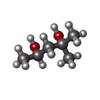
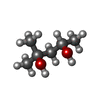
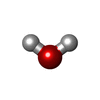



 X線回折 / 使用した結晶の数: 1
X線回折 / 使用した結晶の数: 1  試料調製
試料調製 シンクロトロン / サイト:
シンクロトロン / サイト:  NSLS-II
NSLS-II  / ビームライン: 17-ID-2 / 波長: 0.97934 Å
/ ビームライン: 17-ID-2 / 波長: 0.97934 Å 解析
解析 分子置換 / 解像度: 1.75→28.77 Å / SU ML: 0.2 / 交差検証法: FREE R-VALUE / σ(F): 1.35 / 位相誤差: 22.03 / 立体化学のターゲット値: ML
分子置換 / 解像度: 1.75→28.77 Å / SU ML: 0.2 / 交差検証法: FREE R-VALUE / σ(F): 1.35 / 位相誤差: 22.03 / 立体化学のターゲット値: ML ムービー
ムービー コントローラー
コントローラー



 PDBj
PDBj




